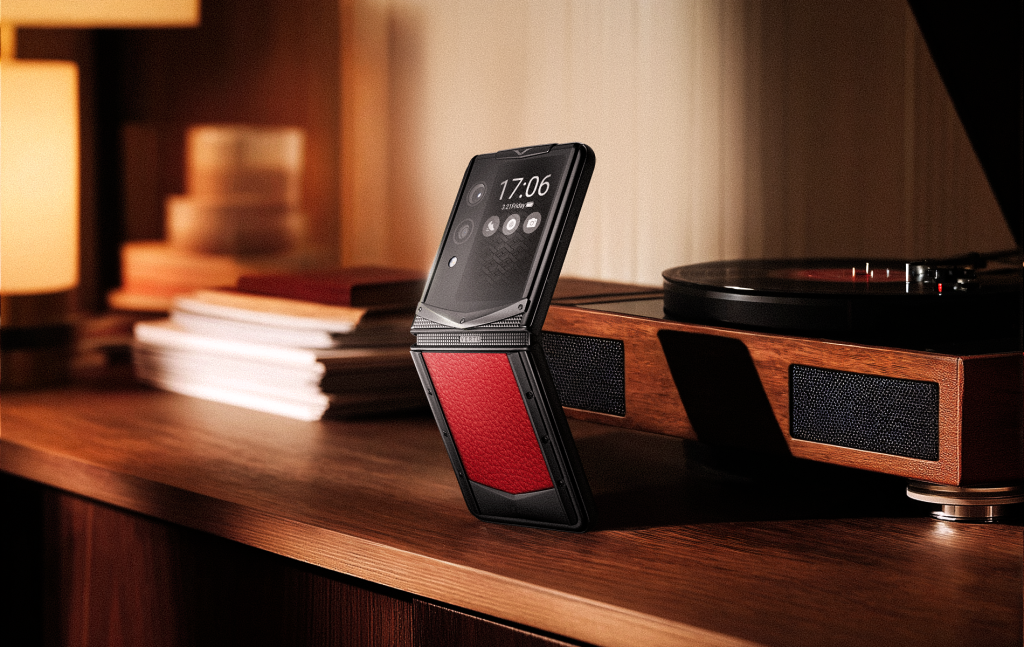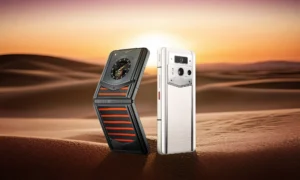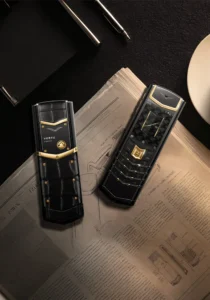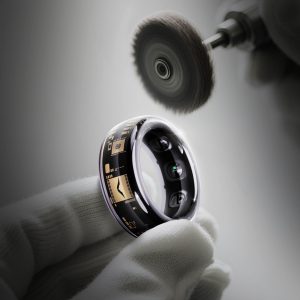
Tired of cracked screens and dead batteries when your work takes you off the beaten path? In 2025, your essential communication tool shouldn't be your weakest link.
Key Takeaways:
- Understand the robust construction and certifications that define military-grade phones.
- Learn how to select and implement these devices for maximum reliability in harsh conditions.
- Discover the tangible benefits and measurable results of using military-grade phones for extreme environments.
Understanding Military Grade Phones
In today's demanding professional landscape, standard smartphones often falter when faced with the realities of rugged environments. This is where military-grade phones step in, offering unparalleled durability and performance where it matters most.
Military Grade Phone Fundamentals
At its core, a military-grade phone is designed and built to withstand conditions far beyond the capabilities of consumer-grade devices. This resilience is not arbitrary; it's achieved through rigorous design principles and adherence to strict standards. These phones are engineered to survive drops, extreme temperatures, dust, water immersion, and even vibration.
Key characteristics include:
- Ruggedized Casing: Typically made from reinforced plastics, rubberized materials, and metal alloys, providing superior shock absorption and impact resistance.
- Sealed Ports and Buttons: Advanced sealing techniques prevent ingress of dust, dirt, and water, often achieving high IP (Ingress Protection) ratings.
- Reinforced Screens: Utilizing toughened glass like Gorilla Glass (often a higher generation than found in standard phones) or even specialized composite materials to resist scratches and cracks.
- Extended Battery Life: Optimized power management and larger battery capacities are common, ensuring devices remain operational for extended periods without charging.
Key Concepts
The term “military-grade” itself is often associated with the MIL-STD-810G (and its successor, MIL-STD-810H) standard. This is a United States Military standard that establishes a set of environmental, transit, and mechanical stress tests. Devices that meet these standards have been subjected to:
- High and Low Temperature Extremes: Testing operation and storage in frigid cold and scorching heat.
- Shock and Vibration: Simulating the rigors of transport and operation in moving vehicles or machinery.
- Water and Dust Intrusion: Ensuring protection against submersion and fine particle ingress.
- Humidity and Salt Fog: Testing resistance to corrosive environments.
“For professionals working in construction, emergency services, or field research, a device that can withstand the elements isn't a luxury; it's a necessity for safety and productivity.”
Another crucial concept is the IP Rating. This international standard classifies the degree of protection provided by enclosures against intrusion from foreign bodies (including dust) and water. Common ratings for military-grade phones include:
- IP67: Dust-tight and protected against immersion in water up to 1 meter for 30 minutes.
- IP68: Dust-tight and protected against continuous immersion in water under conditions specified by the manufacturer (often deeper and longer than IP67).
Military Grade Phone Implementation
Successfully integrating military-grade phones into your operations requires a strategic approach, from initial selection to ongoing management.
Getting Started
The first step is to assess your specific environmental needs. Consider the typical conditions your team operates in. Are they exposed to constant dust, frequent drops, extreme temperatures, or potential water submersion? This assessment will guide your choice of device.
Here's a simple framework for selection:
- Identify Critical Features: What functionalities are non-negotiable? (e.g., long battery life, specific camera quality, GPS accuracy, glove-compatibility touchscreens).
- Review Durability Certifications: Prioritize devices that meet relevant MIL-STD-810H and IP ratings.
- Consider Connectivity: Ensure the phone supports the necessary cellular bands, Wi-Fi standards, and potentially specialized communication features.
- Evaluate Ecosystem Compatibility: If you use specific apps or software, verify that the chosen device and operating system are compatible.
- Budget and Scalability: Determine how many devices are needed and if the chosen solution fits within your budget, with room for future expansion.
Best Practices
Once you have your military-grade phones, follow these best practices for optimal performance and longevity:
- Regular Training: Ensure all users understand the device's capabilities and limitations, as well as proper handling and charging procedures.
- Protective Accessories (Optional but Recommended): While inherently rugged, consider screen protectors or carrying cases for an extra layer of defense, especially for mission-critical components.
- Software Updates: Keep the operating system and applications up-to-date to benefit from security patches and performance improvements.
- Data Backup: Implement a robust data backup strategy to prevent loss of critical information, even with the most durable hardware.
- Environmental Monitoring (if applicable): For extreme use cases, consider using the phone's sensors or integrated apps to monitor environmental conditions.
“We deployed rugged phones across our construction sites, and the reduction in device downtime due to damage has been significant. Our teams can rely on their communication tools, no matter the weather or the terrain.” – Site Manager, Global Construction Firm
Military Grade Phone Benefits and Results
The investment in military-grade phones yields substantial returns in terms of operational efficiency, safety, and cost savings.
Expected Outcomes
- Reduced Device Downtime: Significantly fewer devices will be rendered inoperable due to accidental damage.
- Enhanced Productivity: Teams can work without the constant worry of damaging their communication devices, leading to uninterrupted workflows.
- Improved Safety: Reliable communication is critical in hazardous environments. Military-grade phones ensure that first responders, field technicians, and remote workers can stay connected.
- Lower Total Cost of Ownership (TCO): While the initial purchase price might be higher, the reduced need for frequent replacements and repairs leads to lower overall costs over the device's lifespan.
- Greater Data Integrity: Less risk of data loss due to device failure.
Success Metrics
To quantify the impact of adopting military-grade phones, consider tracking these metrics:
- Device Replacement Rate: Compare the number of devices replaced annually before and after implementation.
- Repair Costs: Track the expenditure on device repairs.
- Productivity Loss Due to Device Failure: Estimate the time lost by individuals or teams when their communication devices are out of commission.
- Worker Safety Incidents Related to Communication Failure: Monitor any incidents where a lack of reliable communication contributed to a safety issue.
- User Satisfaction: Gather feedback from employees on their experience with the new devices.
Comparison of Standard vs. Military-Grade Phones in Extreme Environments
Comparison: Standard vs. Military-Grade Smartphones
| Feature | Standard Smartphone | Military-Grade Phone (MIL-STD-810H/IP68) |
| Drop Resistance | Prone to damage from < 1 meter drops. | Survives drops from 1.5-2 meters onto concrete. |
| Water Resistance | Limited splash protection (IP52-IP67). | Submersible up to 1.5 meters for 30+ minutes. |
| Dust/Sand Resistance | Vulnerable to fine particle ingress. | Dust-tight, preventing any dust ingress. |
| Temperature Range | Operates best in moderate temperatures. | Functions reliably in extreme heat and cold (-20°C to 60°C). |
| Screen Durability | Susceptible to scratches and cracks. | Reinforced glass, highly resistant to impacts and scratches. |
| Battery Life | Typically 1-day use under normal conditions. | Often provides 2-3 days of heavy use, or extended standby. |
| Glove Compatibility | Varies, often poor. | Many models feature specialized touch sensitivity for glove use. |
| Typical Use Case | Office, light outdoor use. | Construction, field service, emergency response, logistics. |
FAQ (Frequently Asked Questions)
Q: Are military-grade phones really built to military specifications?
A: While the term “military-grade” is often used loosely, genuine military-grade phones are tested against established military standards like MIL-STD-810H. This means they undergo rigorous testing for durability in various environmental conditions, including extreme temperatures, drops, vibrations, and water immersion.
Q: Can I use a military-grade phone with gloves on?
A: Many modern military-grade phones are designed with features that allow for touchscreen operation even when wearing gloves. This is crucial for users working in cold environments or performing tasks that require hand protection. Look for specifications mentioning “glove mode” or “wet finger tracking.”
Q: How much more expensive are military-grade phones compared to regular smartphones?
A: Military-grade phones typically have a higher upfront cost. This is due to the specialized materials, robust engineering, and rigorous testing required to meet durability standards. However, when considering the total cost of ownership, including reduced repair and replacement costs, they can often be more economical in the long run for demanding environments.







